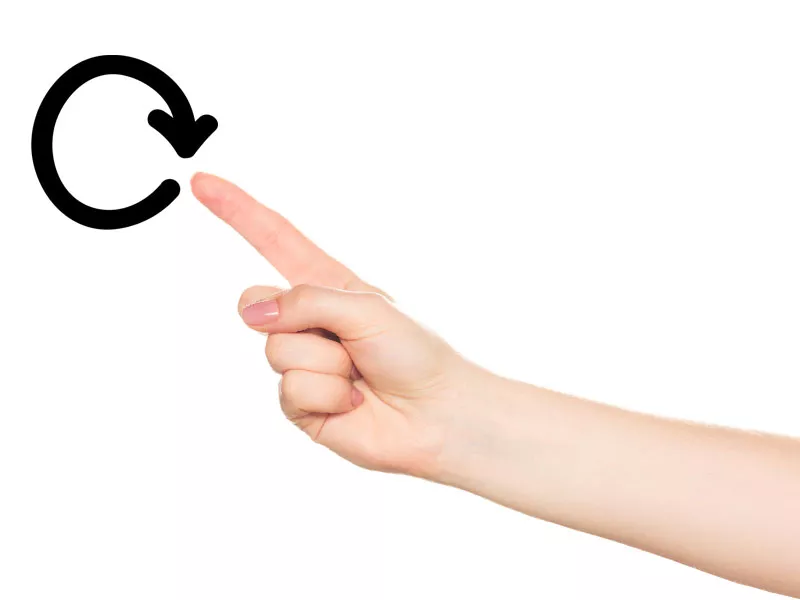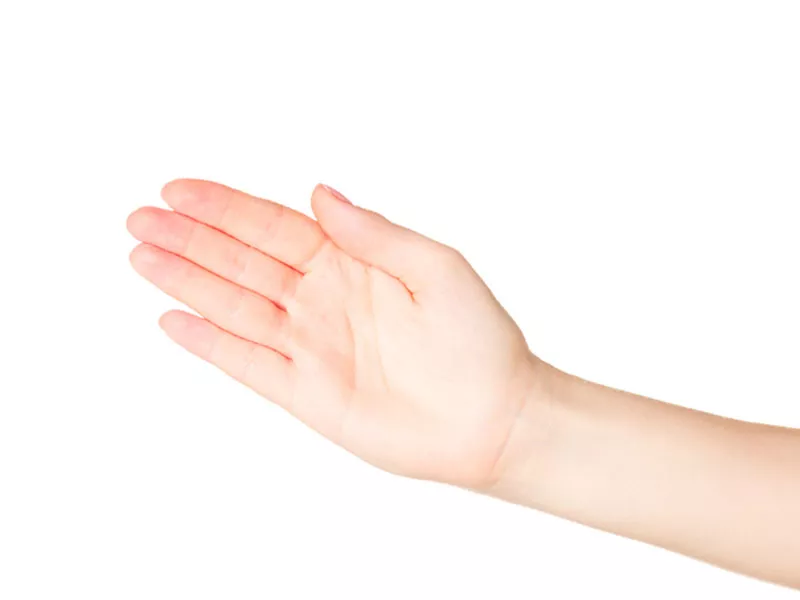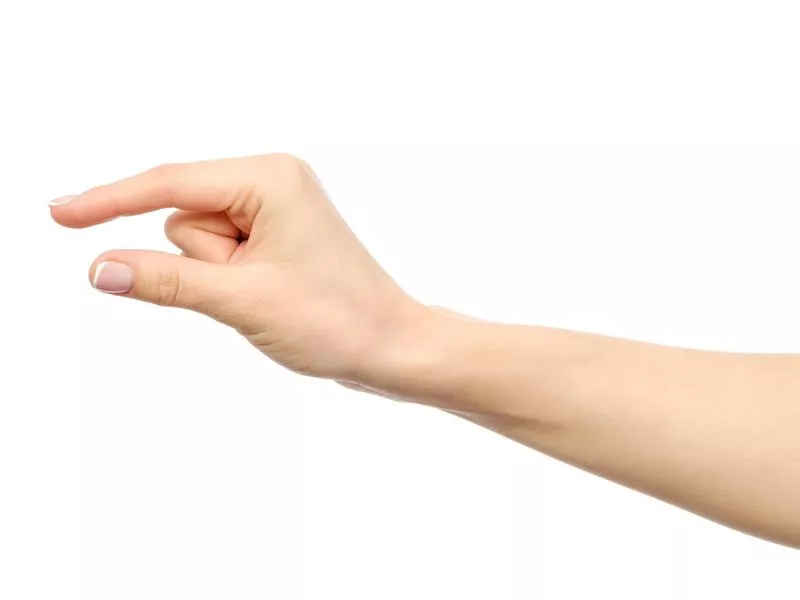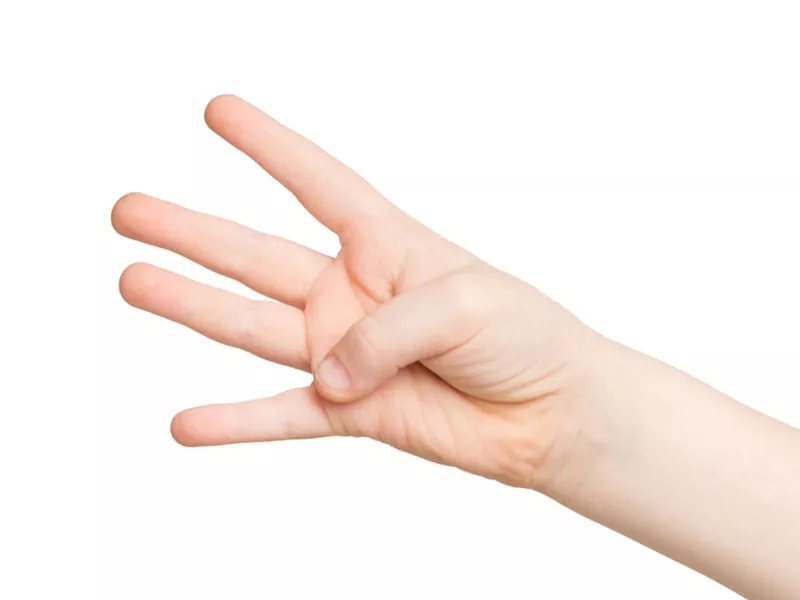16 Hand Gestures to Help You Communicate Better at Work
If you want to make an impact when you speak, add hand gestures to reinforce your message.
Vanessa Van Edwards, founder of Science of People, studied TED Talks to determine why some TED Talks go viral and others don’t. The underlying reason, she found, was hand gestures. The most popular TED Talks speakers use an average of 465 hand gestures while the least popular speakers used only 272 hand gestures, Van Edwards said in her TED Talk, You Are Contagious. “Your brain gives 12.5 times more weight to hand gestures” than to verbal cues, she said.
In fact, when we don’t see a speaker’s hands, we get distracted and perhaps a little bit anxious. When we first see someone, the first thing we look at is their hands, said Van Edwards, author of “Human Lie Detection and Body Language 101: Your Guide to Reading People’s Nonverbal Behavior.” This goes back to our caveman days when we would check to see if someone was carrying a rock or a spear when they greeted us to determine if they were a friend or a foe, she says.
However, to make your point, you can’t just flail your hands around your body. Your hand gestures need to be intentional and reinforce what you are saying. For instance, she says, you wouldn’t hold your thumb and forefingers two inches apart and say, “I have a really big idea.” That would just confuse your audience.
Here are 16 hand gestures that will make your words more memorable.
To Emphasize a Big Idea

Getty Images
What to do: Hold your hands about 18 inches apart, palms facing each other.
When you might do it: When your boss is looking for innovation and you’ve got an idea to help your company lap its competitors.
To Emphasize Unity

What to do: Start with clasped hands, bring them apart like in when you’re emphasizing a big idea and then clasp your hands together again to show two forces coming together.
When you might do it: When you want to demonstrate how two departments came together to create one actionable idea.
To Show Determination
What to do: Raise your fist. It shows determination and excitement to your audience.
When you might do it: When you want to emphasize your team’s success.
To Be Inclusive

What to do: Draw a circle with your fingers to indicate that everyone is invited to participate.
When you might do it: When you want to encourage everyone to add their ideas to the discussion.
To Indicate a Connection

Getty Images
What to do: Gesture an open hand to your audience, then to yourself, and then with a sweeping arm movement, you can indicate there is no longer me and you, but we.
When you might do it: When you want to show your colleagues how you can all work together on a project.
To Show Honesty

Getty Images
What to do: To indicate affection, truth or honesty, place your hand on your chest when you speak.
When you might do it: When you want your colleagues to trust you.
To Gently Emphasize

Getty Images
What to do: Because pointing can be seen as aggressive, instead of using your finger, hold out your entire hand to point with an open palm or put your thumb on top of your fist.
When you might do it: When you want to highlight an idea during a meeting.
To Encourage Memory
What to do: Putting your fingers near your brain will help your audience to remember an important concept or statement.
When you might do it: When you want to encourage your team to remember specific information.
To Encourage Close Listening

Getty Images
What to do: Indicate your have something important to say by holding both arms perpendicular with palms up and raise one of your arms.
When you might do it: When you want to make an important point during a meeting, one that you want to stick with your colleagues and superiors.
To Create a Clean Slate

Getty Images
What to do: Show you’re pushing away old ideas by sweeping your hands in front of you as if you are pushing something aside.
When you might do it: When you finish a brainstorming session and are embracing a new idea.
To Emphasize Positive Emotion

Getty Images
What to do: Use the OK sign or thumbs up. It will help your audience see your statement as positive.
When you might do it: When you want to reassure your boss that a statement is accurate.
To Demonstrate Confidence

Getty Images
What to do: Lightly tap the tips of your fingers together to indicate that you are sure of yourself and your decision or what you are stating.
When you might do it: When you want to reassure your team that you believe in what you’re saying.
To Emphasize a Tiny Difference

What to do: Place your thumb and forefinger just a few inches apart.
When you might do it: When you want to indicate to your boss that her idea and your idea are more similar than different.
To Show an Increase or Decrease
What to do: Lower or raise your hand in front of you.
When you might do it: When you want to demonstrate how many more customers purchased your product this month.
To Show a Comparison

Getty Images
What to do: With your palms turned up, indicate you’re holding an idea in one hand and another idea in your other hand, then give them each equal or more weight.
When you might do it: When you want to help your colleagues decide between two options.
To Enumerate Your Points

What to do: Any time you use a number, emphasis it by holding up your fingers to indicate the number of items, ideas or lessons you will discuss.
When you might do it: When you are listing multiple ideas or actions.